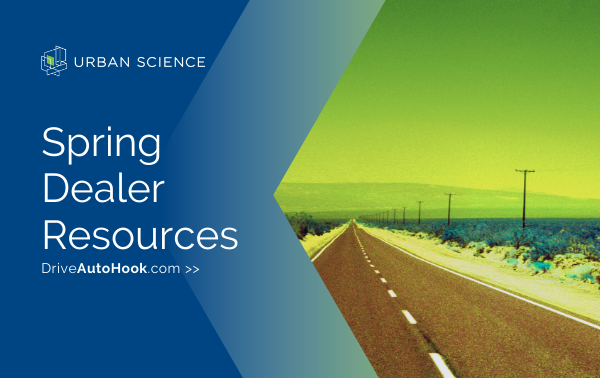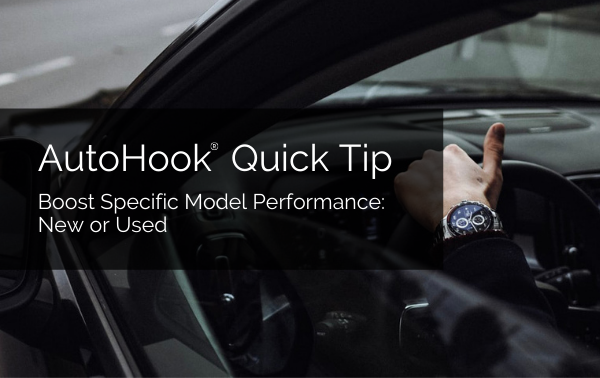by David Metter
More than fifty percent of car shoppers are viewing dealership websites with their mobile devices, so having a mobile marketing strategy to connect with them is not only recommended, but critical for future survival. The benefits of "going mobile" are many and well documented, including the ability to make relevant offers to a specific target market, and the ability to identify and communicate with customers that are geo-physically close to your location.
Yet there is a dark side to mobile technology that auto dealers can't ignore. When customers are in your showroom and using their mobile devices, chances are they aren't checking email. Chances are, they're checking prices and offers at other dealerships. In fact, 62 percent of customers who use smartphones on your lot will visit another dealership within 24 hours.
This phenomenon -- called "showrooming" -- is on the rise, helped out by apps that allow car shoppers to scan a barcode or VIN and instantly see:
· How much other car shoppers in the same area paid for the same make and model
· How much your competition is charging for the same vehicle
When I talk about showrooming to dealers, I am reminded of a similar time back in the early days of the Internet. During that time, some dealers immediately realized the Internet was the future of car-shopping and raced to be early adopters, posting online ads and posting photos of inventory on their websites. Other dealers staunchly opposed the idea of all that transparency; their attitude was "in order to view my inventory, the customer has to come to my store."
In retrospect, this attitude seems pretty silly, but it was very real at the time. Today I often get a similar reaction from dealers when I tell them the best way to deal with showrooming is not to fight it, but to embrace it. Best Buy is one big-box retailer that initially tried to fight showrooming by blocking cell phone and wifi signals in its stores. The attempt failed dismally and eventually, Best Buy embraced showrooming by offering to price-match its competition and boosting its ecommerce presence. This strategy has worked.
Auto dealers can also make showrooming work for them instead of against them.
If they jump in now, they'll be similar to those trend-setters in the early days of the Internet who were well prepared as more consumers went down that path.
Here are a few steps that dealers can take to help them conquer the dark side of showrooming:
Ensure Your Entire Online Shopping Experience is Responsive.
Most dealers trust their website vendors to make their dealership website responsive. But sometimes extensions and other third-party add-ons can render in a way that disrupts the flow or function of a mobile page. The only way to know for sure what a customer's experience will be is to use your own mobile device to do everything a customer does, including: inventory search, getting a trade-in price, calculating payments, filling out a lead form and using online chat.
Ideally this process will be done on more than one mobile device. In fact, it may be a good idea to hold a sales meeting and lead the entire sales team through this process on their mobile devices. At the end of the meeting, all glitches should be identified and as a bonus, the salespeople will have a greater understanding of how half their customers are interacting with the dealership.
Check Out the Competition.
Now use your mobile devices to check out the car-shopping experience on your main competitors' websites. Note both their shortcomings and their strong points, and compare it to your own mobile car-shopping experience. Is there anything you think works that you'd like to add to your website? The goal is to offer the best mobile online shopping experience in town.
I would have an app for existing customers - and I would use it as a service application and for customer retention. I fly Delta and I use their app all the time - I use Spotify. A car-buying app - I am not going to use that every single day. Am I going to use it as a conquest car-buying application - I love apps for the right reasons. I have a strong opinion on executing on mobile apps.
Communicate With Mobile Customers.
Car shoppers using mobile devices rarely fill out lead forms, but they will chat and they will text. So learn to communicate with them using their preferred methods. Using a reliable vendor for these services is highly preferred over letting your salespeople send personal, informal texts. In general, if you want to own your messaging, keep it consistent and stay in compliance, a vendor is a better choice.
Draw Customers to Your Showroom.
Once you are in communication with your mobile customers, give them a reason to visit your dealership. Remember, these car shoppers are performing low-funnel activities like viewing inventory and researching pricing, so your messaging should be low-funnel too.
Avoid high-level messaging stating how great your dealership is or why you should shop there. Low-funnel messaging gives car shoppers a specific reason to visit your dealership today, and provides the answers and information those shoppers are looking for, such as:
1. Maps. Display your address and a map, and clickable directions from your customers' current location.
2. Offers. Give away a free visor or a gift-card just for coming in to take a test drive.
3. Incentives. Display special lease prices, cash-back bonuses and other offers. Offers can be customized to an individual's browsing history.
4. Pricing. Car shoppers want to know pricing and one way or another, they'll find it eventually. Why not be the dealership that gives it to them?
A very wise Jedi-trainer once said, "Fear is the path to the dark side. Fear leads to anger. Anger leads to suffering."
Showrooming may be the dark side of mobile but if Yoda's words are right, auto dealers who fear it may suffer from its ill effects; while those who embrace showrooming will learn to master it, and prosper.
# # #
About the Author:
David brings a wealth of automotive knowledge and experience to AutoHook powered by Urban Science, both from a dealer and service provider perspective. As President of AutoHook, David leads strategy, product, sales, and marketing for the industry leading provider. As the co-architect of the product suite, he works with OEM’s, agencies, vendor partners, and dealers to increase lead conversion, showroom visits, sales attribution, and brand Loyalty & Conquest rate.
Prior to starting AutoHook, David served more than six years as Chief Marketing Officer for MileOne Automotive, a large, privately held automotive dealership group. At MileOne, he built an industry-leading marketing organization, leveraging technology and the internet to increase market share, while dramatically decreasing advertising spend per vehicle sold. David previously headed sales for Autobase for nearly 5 years, where he helped grow the company from a small start-up to the leading automotive CRM software vendor. He began his career on showroom floor. As an early adopter of technology, he built a prospecting and follow-up system that helped him rise to become one of the top Chrysler salesmen in the country and moved his way up, eventually to General Manager of a dealership.
David is regarded as one of the foremost experts in the automotive marketing and e-commerce space and is a frequent speaker at industry events including Digital Dealer, the Global Automotive Conference, NADA, 20 Groups, and JD Power’s Automotive Internet Roundtable.



















